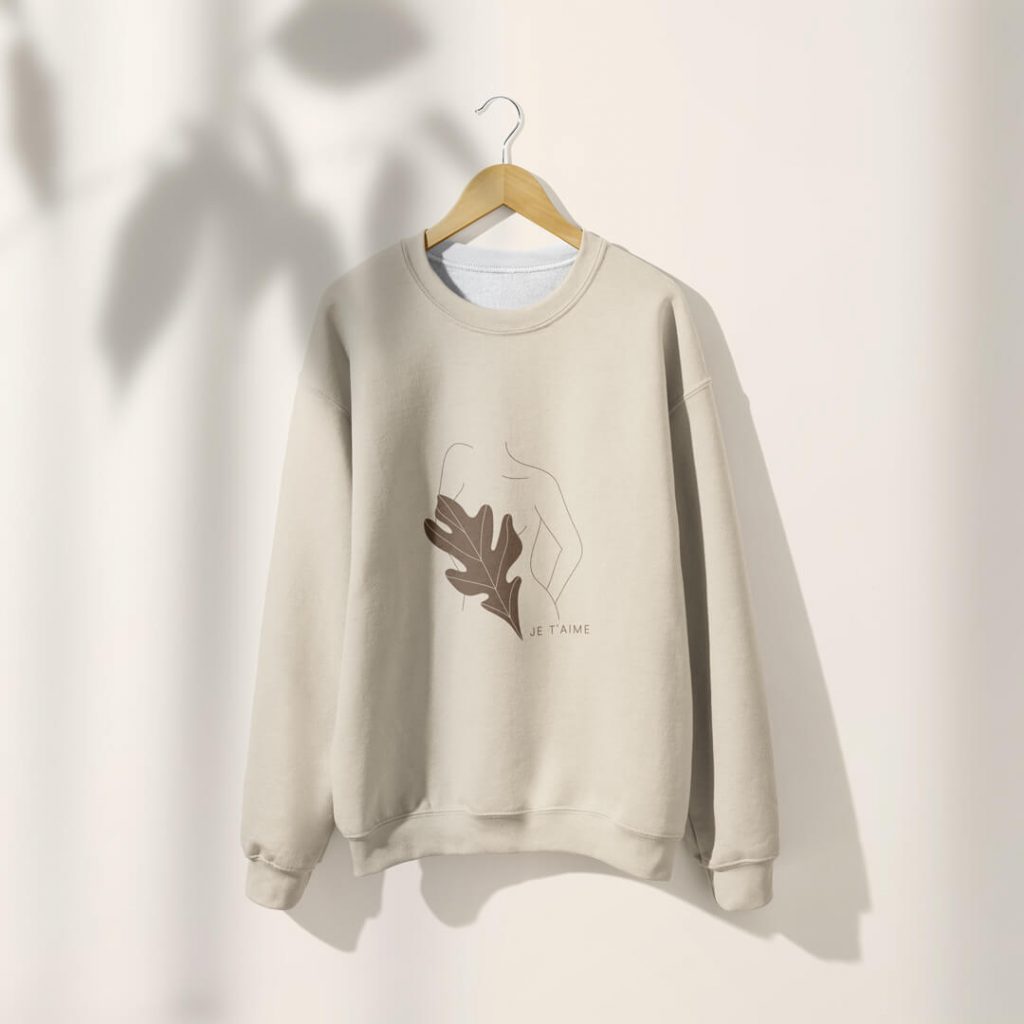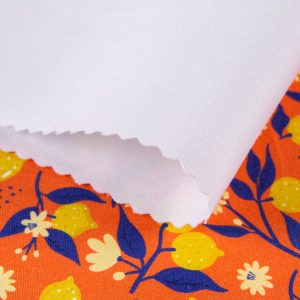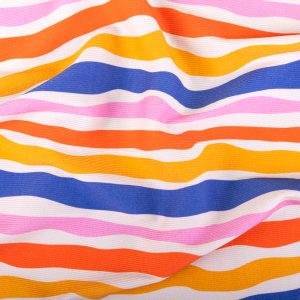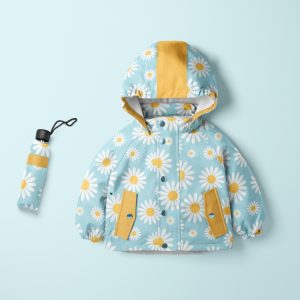Clothes accompany us everywhere. At work, at home, on walks, and even while sleeping. No wonder we expect the materials that cover our skin every day to be comfortable and pleasant to the touch. Good quality clothes will not only provide you with the highest comfort of use, but you can be sure that with proper care they will serve you for years. How and where to find good quality clothes?
Table of Contents
- Components of the quality of clothes
- First, the material
- Does the fabric match the type of clothing?
- Is it breathable?
- How is it to the touch?
- The grammage of the material, i.e. whether it will be durable, thick or thin
- Second, execution
- Threads and seams
- Prints
- Finishes
- Price ≠ quality
- Does everything in the wardrobe have to be of good quality?

Components of the quality of clothes
What affects the quality of the clothes we buy? What features determine that clothing is of good quality? The quality of clothes includes, among others: material, cut, sewing and details. See what you need to pay attention to when looking for good quality clothes.
First, the material
The material is the foundation of the quality of clothing. The material from which the clothes are made determines their appearance, comfort of use, care, durability and costs. Half of the price of clothes is the price of the fabric, which is why manufacturers often reach for less expensive solutions. How to look for good quality material in clothing?
Does the fabric match the type of clothing?
When you start your search for quality clothing, start by checking the information on the inside labels of the clothes. Usually, you will find them in the side seam, at the waist of the trousers, and sometimes at the neck. On the label, you will find information about the composition of the raw material. This will tell you whether the material matches the type of garment. Think about where you will wear the clothes. Some fibres will work well outside on hot days, others will provide comfort during exercise at the gym. Sportswear and outerwear are often made of synthetic materials, including polyester, which does not absorb moisture, dries quickly and is extremely durable. Cashmere and wool are perfect for cold days because they breathe but keep you warm. Cotton is actually universal – it is breathable, but also warm, you can find it in summer dresses or formal shirts.
Is it breathable?
A huge part of the comfort of wearing clothes is their breathability. Materials that wick moisture away from your skin to keep you dry, comfortable and fresh. When choosing everyday clothes that we wear close to the skin, air permeability is of great importance. This applies to underwear, t-shirts, blouses, socks and trousers. Look for natural materials in such clothes, including cotton, linen, wool and viscose. Be careful with synthetic fibres – a small admixture improves the elasticity and durability of clothing, while a high content in the composition reduces air permeability.
How is it to the touch?
Be sure to touch the material and see if it is nice and pleasant. The material, which is soft, and pleasant to the skin, will make wearing clothes comfier and will make us reach for them more often. It’s wonderful on a cold day to wrap yourself in soft cashmere or fluffy alpaca or fluffy, 100% cotton. The quality of the fabric is influenced by its weave and fibre length. Both natural and synthetic fibres can be found in low- and high-quality versions.
The grammage of the material, i.e. whether it will be durable, thick or thin
By cutting production costs, not only the quality of the material but also its thickness decreases. Thinner materials can be found in everyday t-shirts, summer dresses or trousers. This may seem intentional, after all, thinner material for the summer seems more breathable. Unfortunately, the biggest downside of thin fabrics is their durability. Try to choose materials with a dense weave, solid, opaque and a bit heavier. Not only will they be of better quality and last longer, but they will also fit better on the body.
The composition of the garment itself affects the durability of the material. If you reach for a mixture of fibres with different, opposing properties, choose clothes in which one of the fibres predominates. In clothing made of cotton, polyester and elastane, choose items with at least 75% single-fibre content. The combination of elastane, polyester and cotton can cause different fibres in the wash to shrink and pill at different rates.

Second, execution
You are already holding clothes made of good quality material in your hands, now it’s time to pay attention to the garment’s quality. Here, look primarily at the garment’s proportions, fit, seam placement, and thread quality. All these elements affect the quality and durability of a particular garment.
Threads and seams
You don’t need to have a great tailoring experience to appreciate well-sewn clothes. Start by looking at the visible outer seams, then turn the garment inside out and look at the inner seams. You can recognize good quality by colour-matched, strong threads. Of course, as long as contrasting threads are not part of the design, like light beige or yellow denim stitching. Stretch the seam slightly and see if the threads break. Make sure the seams are straight, equidistant from each other and the edge of the fabric. The density of the seams is also important – the denser, especially in places that are exposed to intensive use in the clothing, the more durable the clothing will be. Avoid clothes that have loose threads in the seams, seams come apart even when slightly stretched, and the left side of the garment is full of threads everywhere.
Prints
If you decide on clothes with printed patterns or graphics, be sure to take a look at their quality. In the case of prints on T-shirts or sweatshirts made by screen printing, gently stretch the material in the place of the motif and check whether the pattern does not crack or peel off from the surface of the material. If you decide on fabrics with a pattern, touch the fabric and check if the print is felt under your fingers. Good quality printed clothes will not lose colour, even after many washing cycles, and the printed patterns themselves will not be felt on the surface of the fabric. How to find good quality sweatshirts with your own print? The good quality of printed clothes depends on the printing technology used, the pigments used and, of course, the base materials on which the patterns are applied. Your quality wardrobe can be diversified by high-quality sweatshirts with your own print. Good quality printed fabrics are the basis for creating one-of-a-kind clothes.
Finishes
A big part of the quality of a garment is its finishes. See how the zipper is sewn, and how the buttonholes and buttons are sewn. Check that there are no glue stains on the material with the decorations attached with glue. Good quality clothing is characterized by aesthetics in every, even the smallest detail. Each seam and edge of the fabric will be finished evenly and beautifully, decorations and buttons will stick to the fabric and the cut will be perfect and fitted.
Price ≠ quality
Yes, good quality clothes cost more than any t-shirt from a popular chain store. No, the high price of clothes does not always go hand in hand with high quality. The last thing that should be suggested when choosing good quality clothes is their cost.
Does everything in the wardrobe have to be of good quality?
Not everyone can afford to complete their entire wardrobe with only high-quality clothes. Mid-range clothes, and sometimes even those lower-quality items of clothing will do their job well, especially if your clothing shopping budget is limited. If you can only afford a few good quality items, what should you add to your wardrobe? Invest in good quality coats or other outerwear, a good pair of jeans, shoes and clothes with classic, timeless cuts that will not go out of style next season.





